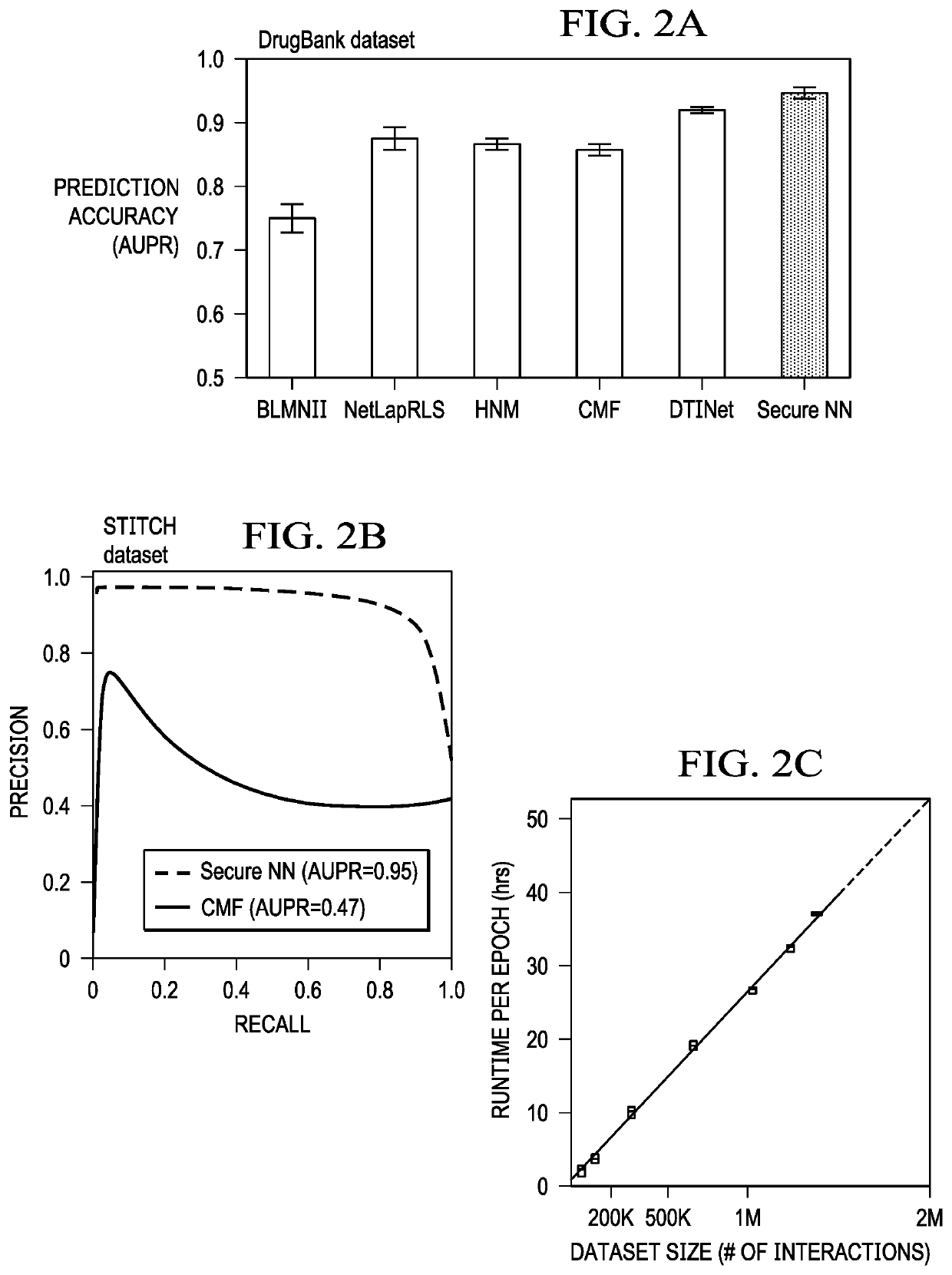Realizing private and practical pharmacological collaboration using a neural network architecture configured for reduced computation overhead
a neural network and computation overhead technology, applied in the field of data sharing and collaboration in biomedicine, can solve the problems of inability to openly share pharmacological data, inability to experimentally interrogate in an exhaustive manner, and the space of potential targets is far too large to achieve state-of-the-art prediction accuracy, more effective and collaborative biomedical research
- Summary
- Abstract
- Description
- Claims
- Application Information
AI Technical Summary
Benefits of technology
Problems solved by technology
Method used
Image
Examples
Embodiment Construction
[0010]Modern cryptography offers techniques to encourage pharmacological collaboration by greatly mitigating privacy concerns associated with data sharing. For instance, secure multiparty computation (MPC) protocols allow multiple entities to securely compute over their private datasets without revealing any information about the underlying raw data, except for the final computational output. Unfortunately, the promise of privacy-preserving collaboration has been severely hindered by the inability of existing secure computation frameworks to scale to complex computations over large datasets, and in particular to DTI prediction on datasets with millions of interactions. This disclosure addresses this problem.
[0011]In particular, this disclosure provides for an end-to-end pipeline for collaborative DTI prediction based on secure MPC that newly enables privacy-preserving collaboration within practical runtimes even for million-interaction datasets. FIG. 1 depicts the basic framework. C...
PUM
 Login to View More
Login to View More Abstract
Description
Claims
Application Information
 Login to View More
Login to View More - R&D
- Intellectual Property
- Life Sciences
- Materials
- Tech Scout
- Unparalleled Data Quality
- Higher Quality Content
- 60% Fewer Hallucinations
Browse by: Latest US Patents, China's latest patents, Technical Efficacy Thesaurus, Application Domain, Technology Topic, Popular Technical Reports.
© 2025 PatSnap. All rights reserved.Legal|Privacy policy|Modern Slavery Act Transparency Statement|Sitemap|About US| Contact US: help@patsnap.com



